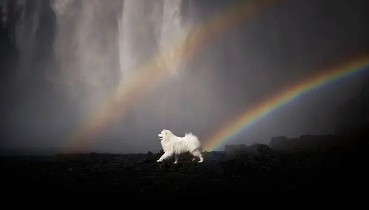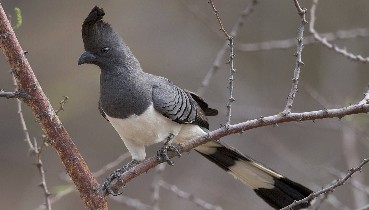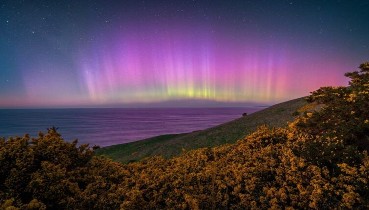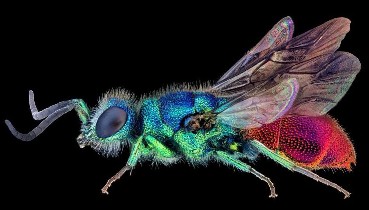- Mesa Falls Eruption: 1.3 million years ago, forming the Henry's Fork Caldera.
- Lava Creek Eruption: 640,000 years ago, creating the current Yellowstone Caldera.
 |
Map showing the ashbeds of previous Yellowstone Volcano eruptions. |
Hydrothermal and Geothermal Features: Yellowstone is renowned for its geothermal features, including geysers like Old Faithful, hot springs, mudpots, and fumaroles, all powered by the volcanic heat beneath the park. The park contains about half of the world's hydrothermal features, with over 300 geysers, making it a global hotspot for such activity. The heat from the Yellowstone volcano powers over 10,000 hydrothermal features, making it one of the most geologically active regions on Earth.
Old Faithful: Yellowstone is home to Old Faithful, one of the most famous geysers in the world, which erupts approximately every 90 minutes, although this can range from 60 to 110 minutes depending on the length of the previous eruption.
 |
| Tourists watching the Old Faithful erupting in Yellowstone National Park. |
Magma Chamber: Recent studies indicate that beneath Yellowstone, there are two magma reservoirs or chambers. One is shallower, containing more rhyolitic magma (viscous, with higher melt percentages, up to 28% melt as per recent estimates), and a deeper one with more basaltic magma, which is less viscous. This dual-chamber system has been described in various studies, with the upper chamber at depths of 5–19 km and the lower one extending from 20–50 km.
Earthquakes: Yellowstone experiences between 1,000 and 3,000 earthquakes annually, most of which are too small to be felt. This activity is closely monitored as it provides insights into the movement of magma and hydrothermal fluids beneath the surface.
Volcanic Activity: Despite its active nature, the likelihood of a massive eruption in any given year is extremely low. Scientists monitor Yellowstone for signs of unrest, but current indicators do not suggest an imminent eruption.
Lava Flows: The most recent volcanic activity in Yellowstone involved lava flows rather than explosive eruptions. The last lava flow occurred about 70,000 years ago.
Hydrothermal Explosions: Yellowstone has experienced hydrothermal explosions, where water heated by magma suddenly turns to steam, causing rocks to be thrown and craters to form. Small hydrothermal explosions, like the one reported on July 23, 2024, are not uncommon and occur due to the intense geothermal activity, but they are not indicative of an impending volcanic eruption. Hydrothermal explosions occur when water under the ground is rapidly heated by the geothermal activity present in places like Yellowstone. This causes the water to flash to steam, leading to an explosion due to the sudden increase in volume. These events are driven by the interaction of water with heat, not by magma movement, which would be indicative of volcanic activity.
 |
A hydrothermal explosion occurred in Yellowstone National Park (July 23, 2024) in the Biscuit Basin thermal area. |
Impact of an Eruption: The last major eruption at Yellowstone was 1,000 times more powerful than the 1980 eruption of Mount St. Helens. If Yellowstone were to erupt in a supervolcanic event, the immediate effects would devastate the surrounding region, but the global impact would come from ash fall and changes in climate due to sulfur aerosols reflecting sunlight, potentially leading to a "volcanic winter."
Biodiversity: Despite its volcanic nature, Yellowstone supports a diverse ecosystem, which thrives due to the geothermal activity and the rich volcanic soil.
Tourism: Millions visit Yellowstone each year not only for its volcanic features but also for its wildlife and natural beauty, making it one of the most visited national parks in the U.S.
Monitoring: The Yellowstone Volcano Observatory (YVO), a consortium of eight organizations, closely monitors volcanic activity in Yellowstone.Scientists use a variety of techniques, including seismometers, GPS stations, and gas sensors, to track changes in the volcano's behavior. This includes seismic activity, ground deformation, and geothermal changes.
Current Status: Despite myths and concerns, scientists believe that Yellowstone is not "due" for an eruption soon. Volcanoes do not work on predictable timelines, and current activity suggests Yellowstone is in a relatively stable state with its geothermal and seismic activities acting as pressure release mechanisms.
While Yellowstone is indeed an active volcanic system that fascinates many, the likelihood of a catastrophic eruption occurring in the near future remains very low. Scientists continuously monitor the area, equipped with the technology and knowledge to predict volcanic activity, thereby providing ample warning if the situation were to change. Thus, Yellowstone stands more as a marvel of geological activity rather than an imminent threat to be feared.














